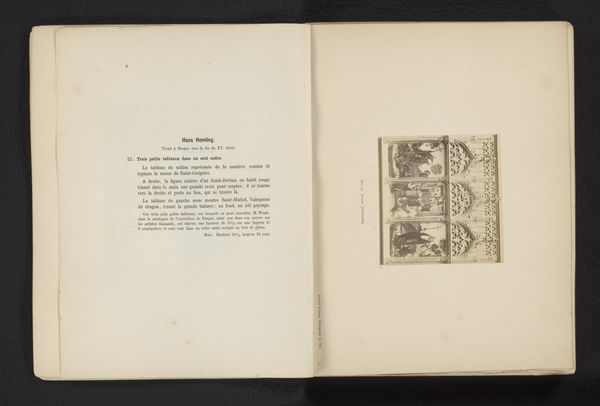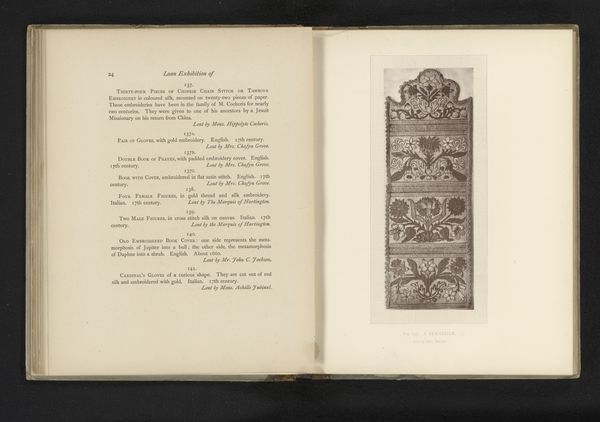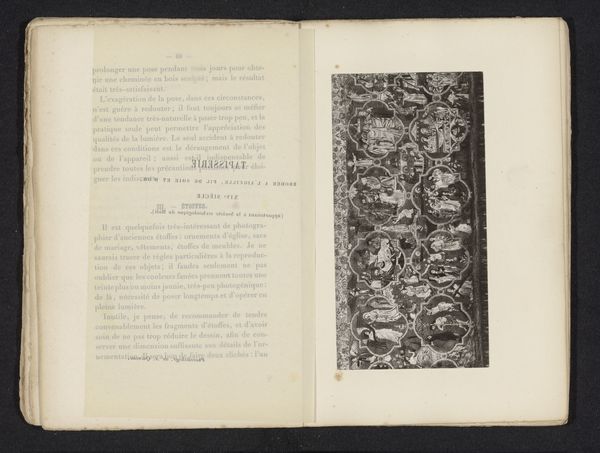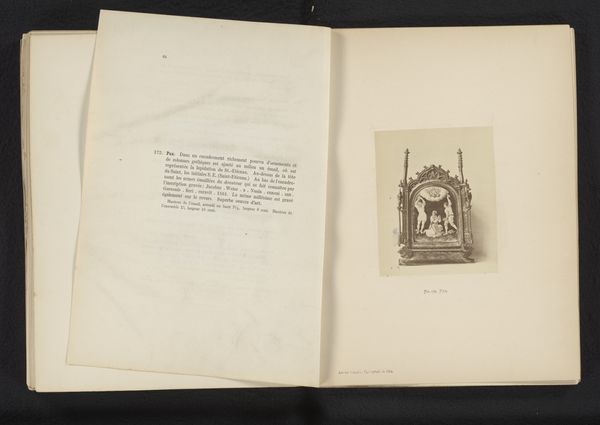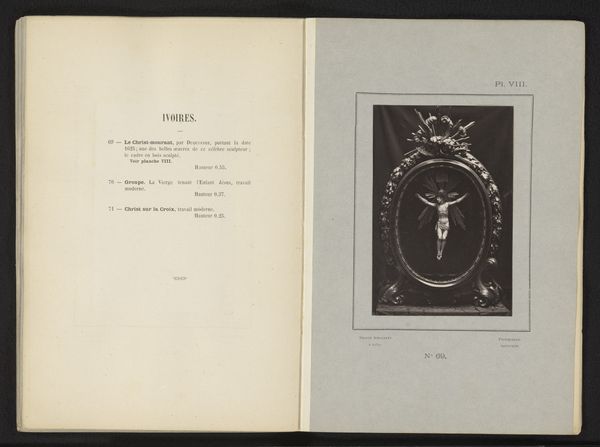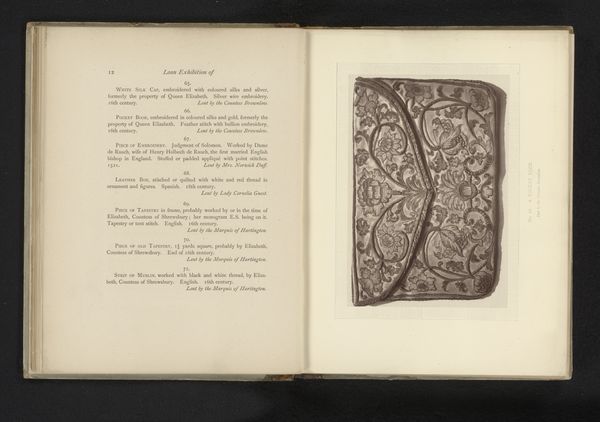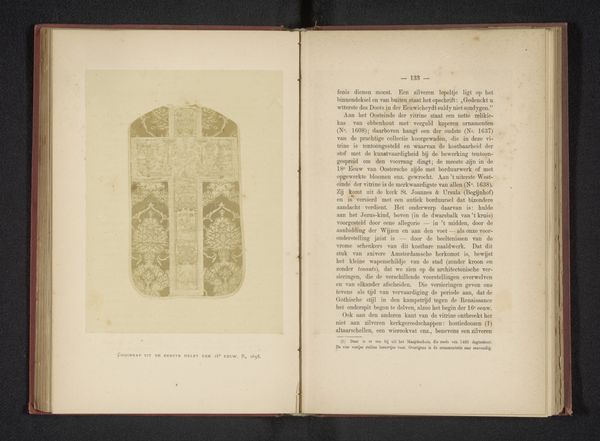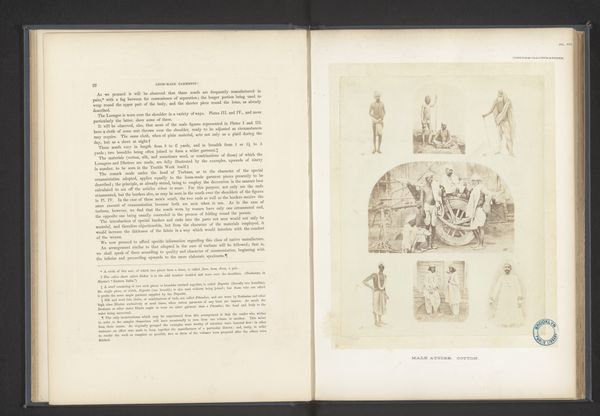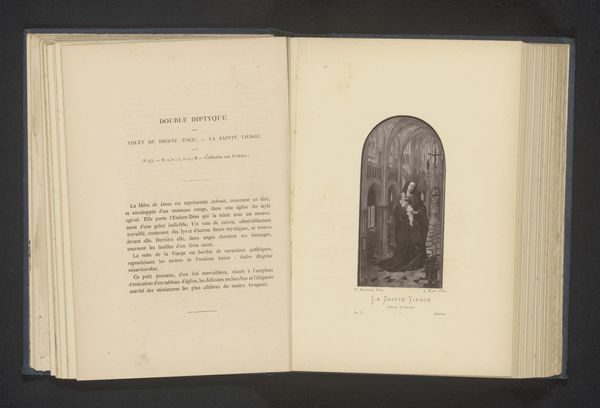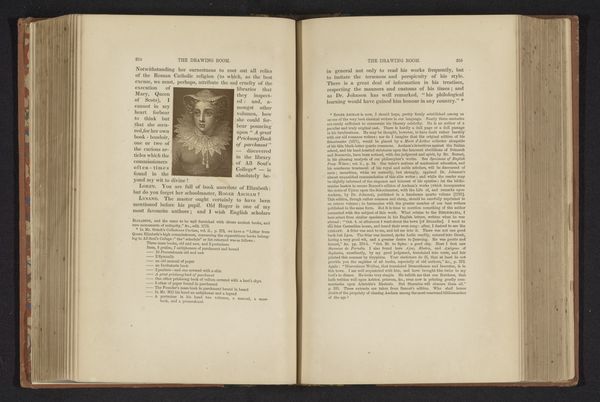
Dimensions: height 132 mm, width 110 mm
Copyright: Rijks Museum: Open Domain
Curator: Before us is a page featuring a bronze sculpture rendered in a distinct Gothic style. It's cataloged as having been created sometime before 1876. What strikes you most about its presentation here? Editor: It’s intricate, almost lace-like. The metalwork seems so delicate. I am also curious, however, about its original placement and function, whether religious or decorative. What purpose was such a detailed casting meant to serve? Curator: The Gothic style in the 19th century was often employed to evoke a specific cultural and national heritage, think of movements surrounding nationhood that needed symbolism. Bronze, a historically significant material, links back to traditions of craftsmanship. Considering it's Gothic, do you read a commentary on religious institutions within the broader sociopolitical context? Editor: The labor involved— the carving and casting —is certainly of interest. Consider also the mining of the metal itself: Where did the bronze originate, and who was involved in its extraction and refinement? This would speak to trade routes, too. What can this particular artwork reveal about its moment, and how those means of making and trading impact interpretations? Curator: That's an excellent point to think about materials. The re-emergence of Gothic imagery during this era reflected complex ideas about religious authority. These were not necessarily celebrations of faith alone, but also political statements linking to prior social orders. We can interpret them, in context, by challenging notions of the purity of faith. Editor: Exactly. Even its position in this book affects my viewing experience. Seeing the printed words on the page alongside the image invites further reflections on craftsmanship and technology. Both are tied to knowledge. Curator: Agreed. So, seeing this piece offers us a lens through which to look at social narratives present within Gothic art during periods of political instability. Editor: Indeed. It asks more questions than it answers. Curator: Yes, and thinking critically is really the essence of it. Editor: Absolutely.
Comments
No comments
Be the first to comment and join the conversation on the ultimate creative platform.
